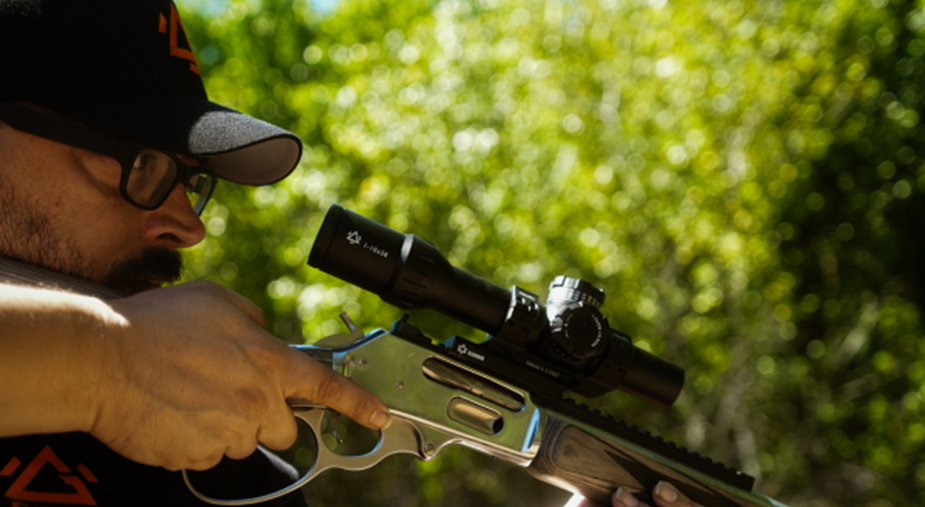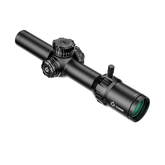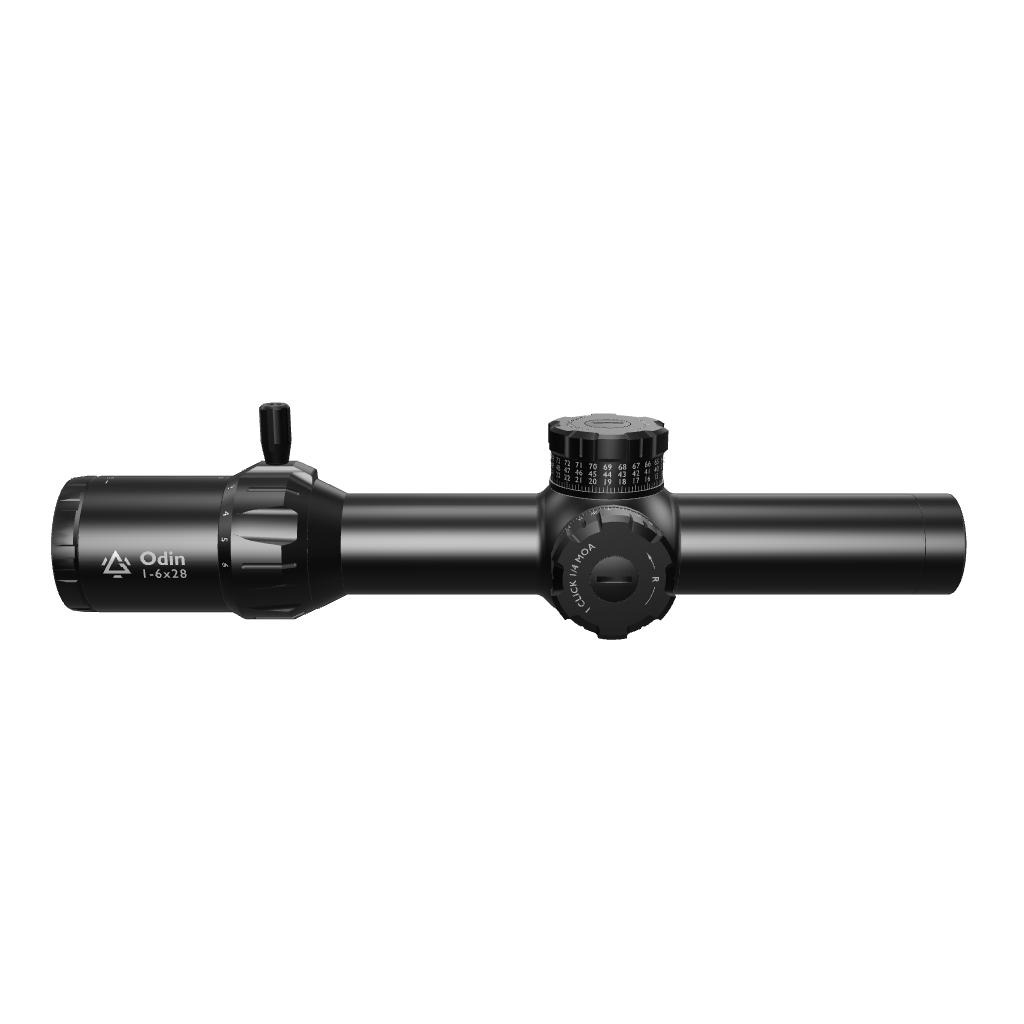7 Useful Tips for Buying a Tactical Scope
Unlike standard hunting scopes, a tactical scope is engineered for precision, durability, and adaptability in high-pressure environments. With so many options on the market—ranging from MIL-DOT reticles to illuminated optics—it’s crucial to know what features truly matter.
Let's break down everything you need to consider before investing in a tactical scope, ensuring you get the perfect optic for your needs.
Tip#1. Check for Clear Optics and Sufficient Brightness
For a tactical rifle scope, always go with high-quality lenses with multiple coatings.
Because many tactical scenarios will require you to shoot at higher magnifications or in low-light conditions, your tactical scope must be able to provide sharp and clear images at all times.
Multi-coated lenses are preferable: the multiple coating helps reduce glare and ensures bright images across your entire field of view.
Popular Brands for Tactical Rifle Scope Glasses
- German Schott Glass- clear glass, reduced chromatic aberration, clean and crisp images.
- Oakley SI Ballistic M Frame – Military-grade protection with excellent clarity.
- Smith Optics Elite Aegis – Tactical-grade durability with anti-fog coatings.
- Revision Military Sawfly – Used by military personnel, high-impact resistant.
How Important is the Size of the Objective Lens?
It is always advisable to go for a tactical rifle scope with a larger objective lens of about 50 mm.
A larger objective lens gathers more light and can produce a bright and clear image at all times, even in low-light situations.
However, a well-coated lens, even if the rifle has a smaller diameter, would still gather sufficient light to provide good and clear images in low light.
Kinds of Coated Lenses
- Fully Multi-Coated (Best) – Multiple layers of coatings on all air-to-glass surfaces for maximum light transmission and glare reduction.
- Multi-Coated – Multiple coatings on at least one lens surface.
- Fully Coated – A single coating on all air-to-glass surfaces.
- Coated – A basic, single-layer coating on one lens surface.
Tip#2. Ensure Durability and Build Quality
For longevity and durability, always ensure that your tactical riflescope is rugged, shockproof, waterproof, and fogproof.
These features will enable it to withstand the harshest conditions, including recoil (especially if you use high-caliber rifles), rough handling, and exposure to wind, snow, and the elements.
It is easy to determine how durable a rifle scope is. Look out for the following features and components:
- Made from aircraft-grade aluminum, such as 6061-T6 or 7075-T6 aluminum.
- Rated for high-caliber rifles (.308, .338, or .50 BMG).
- The O-rings are properly sealed to prevent water, dust, and debris from entering.
- Lenses have scratch-resistant coatings to protect against dirt and rough handling.
Tip#3: Extensive Magnification Range
For tactical purposes, go for a rifle scope with variable magnification, preferably an LPVO. An LPVO not only enables you to handle a variety of shooting scenarios but also to quickly adapt and adjust to unpredictable tactical scenarios.
Why an LPVO is Great for Tactical Use
- With a wide magnification range (typically from 1x to 6x, 8x, or even 10x), an LPVO is highly adaptable for both close-quarters and mid-range engagements.
- At 1x magnification, an LPVO functions like a red dot, and you can aim with both eyes open.
- Most LPVOs are shockproof, waterproof, and fogproof, designed to withstand harsh conditions.
- Modern LPVOs feature daylight-bright reticles, enhancing visibility in low-light environments.
- An LPVO is always a good idea for a tactical scope, whether you are engaging targets at close range or over long distances.
Check out Gunnr Odin LPVOs
Gogunnr is a newly launched brand of LPVO optics, and it is supplying some of the best and most affordable LPVOs this year. The Odin LPVOS line has received an immensely positive response from the shooting community.
Gunnr’s LPVOs come in multiple magnification ranges. You can choose between the Odin 1-6x28, the Odin 1-8x25, and the Odin 1-10x28.
Here are some main features of Gunnr scopes that may come in handy in the field:
- The German Schott lenses are clean, acute, and clear.
- They are FFP LPVOs: suitable for most shooters.
- They are made of durable 7075 Aluminum Alloy.
- They come with locking turrets and a zero-stop feature
Then there’s Gunnr’s customer support, which is always present to respond to questions and concerns. Gunnr provides a lifetime warranty for its products, and the team is dedicated to giving you all the assistance you need in your shooting endeavors.
Tip#4. Make Sure it Has a Wide Field of View
While higher magnifications allow for precision shots at long range, too much magnification can be a disadvantage: at higher magnification, your field of view becomes narrower.
A good tactical scope balances magnification with a wide field of view, ensuring you can track fast-moving targets at close distances without losing sight of them when you dial up the magnification.
- Wider FOV at Low Magnification → Faster target acquisition in close-quarters scenarios.
- Balanced FOV at Mid Magnification → Good for tracking moving targets.
-
Sufficient FOV at High Magnification → Essential for long-range precision without tunnel vision.
For tactical applications, an LPVO with ~100 ft. at 1x or a mid-range scope with 30+ ft. at 3x offers an excellent balance of speed and target identification.
Tip#5. The Reticle Design Should be Suitable
When buying a tactical rifle, go for Mil-dot (or MOA reticles) or BDC reticles, and ensure that they have illuminated reticles. These reticle types are best for fast target acquisition and precise adjustments.
- Mil-dot or MOA reticles help with range estimation and windage/elevation adjustments.
- Illuminated reticles improve visibility in low-light situations.
- BDC reticles help account for bullet drop over long distances, allowing you to make faster, more accurate adjustments without the need for external data.
Tip#6. Check for Parallax-Free Feature
Choose a tactical scope that is parallax-free at a certain distance (usually 100 yards or more).
When a tactical scope is parallax-free at a certain distance, it is easier to aim: the reticle remains in focus when you change your eye position.
-
For greater flexibility, some scopes even offer adjustable parallax, allowing you to fine-tune the reticle focus for various shooting distances.
A flexible reticle is particularly useful for long-range shooting or precision rifle engagements, but not really an absolute necessity.
A parallax-free feature, on the other hand, would make your life a lot easier.
Tip#7. Check the Adjustment Controls
Adjusting turret scopes should not be complicated, especially if your turrets are of good quality.
Good tactical scope should feature turrets that are easy to use and reliable for windage, elevation, and focus adjustments.
Here are some characteristics of good rifle scope turrets:
- The adjustments are tactile, with distinct clicks that let you know you’ve made a change, even when you’re wearing gloves or under stress.
- They have a Zero-reset function that allows you to return to your original settings quickly after making adjustments, which is crucial in fast-paced tactical situations.
- It comes with locking turrets, preventing accidental changes in the field.
Summary of Key Features for a Good Tactical Scope
In summary, here are some key features
- High-quality optics and lens coatings for clear, bright images
- Durability (shockproof, waterproof, and fogproof)
- Variable magnification to adapt to different shooting ranges
- Tactical reticles (MIL-Dot, MOA, illuminated, BDC) for fast targeting
- Parallax adjustment for focus at various distances
- Positive, tactile turrets for precise and fast adjustments
- Long eye relief and a generous eye box for comfort and safety
- Ability to maintain zero and withstand recoil
- Zero reset and locking turrets for convenience in the field
- Solid warranty and customer support
More From Us
Check out how to use your Odin optic for hunting and other important tips on protecting your LPVO. If you own an AR-15, learn why the Gogunnr optic pairs perfectly with your AR-15.







